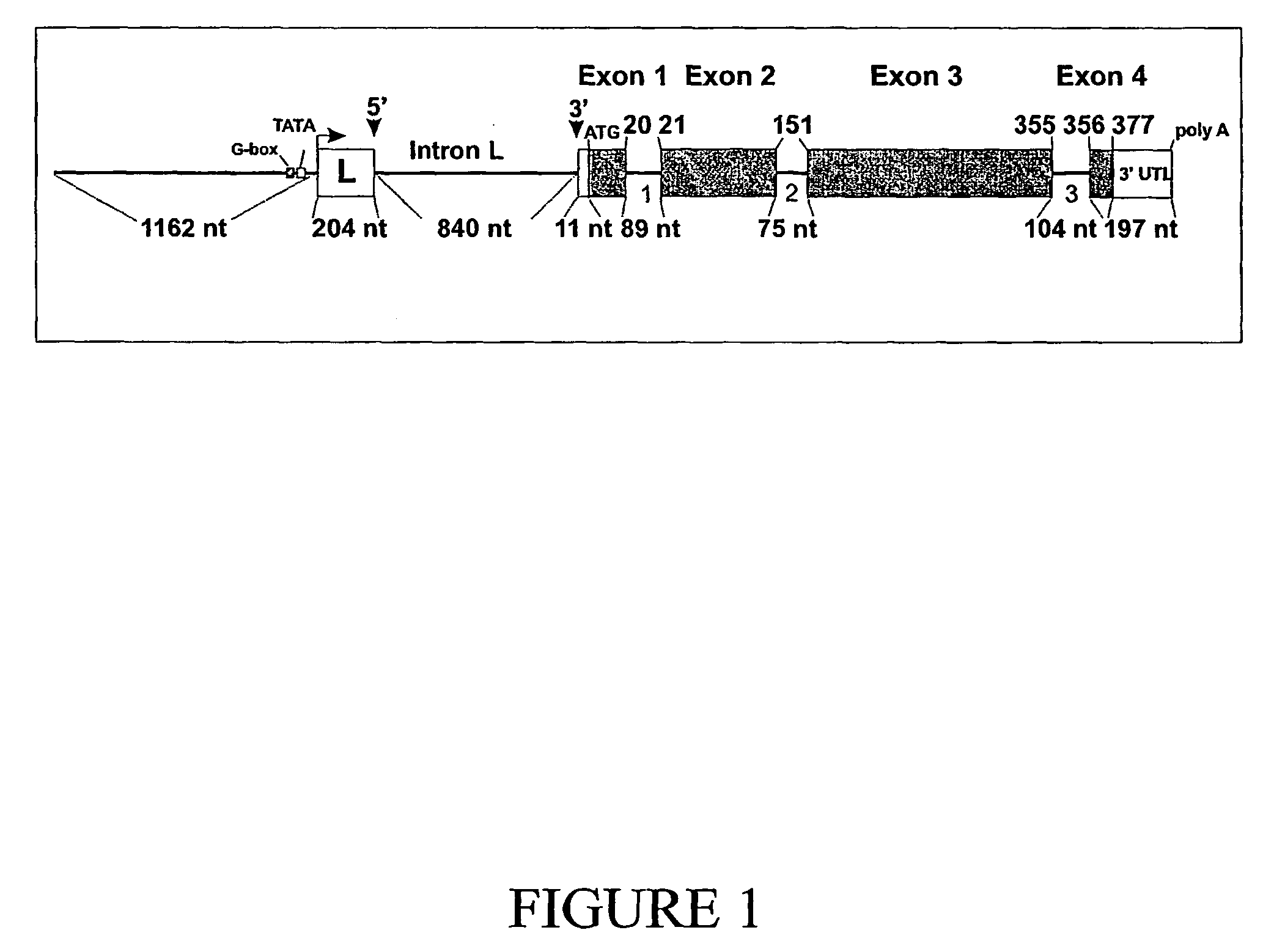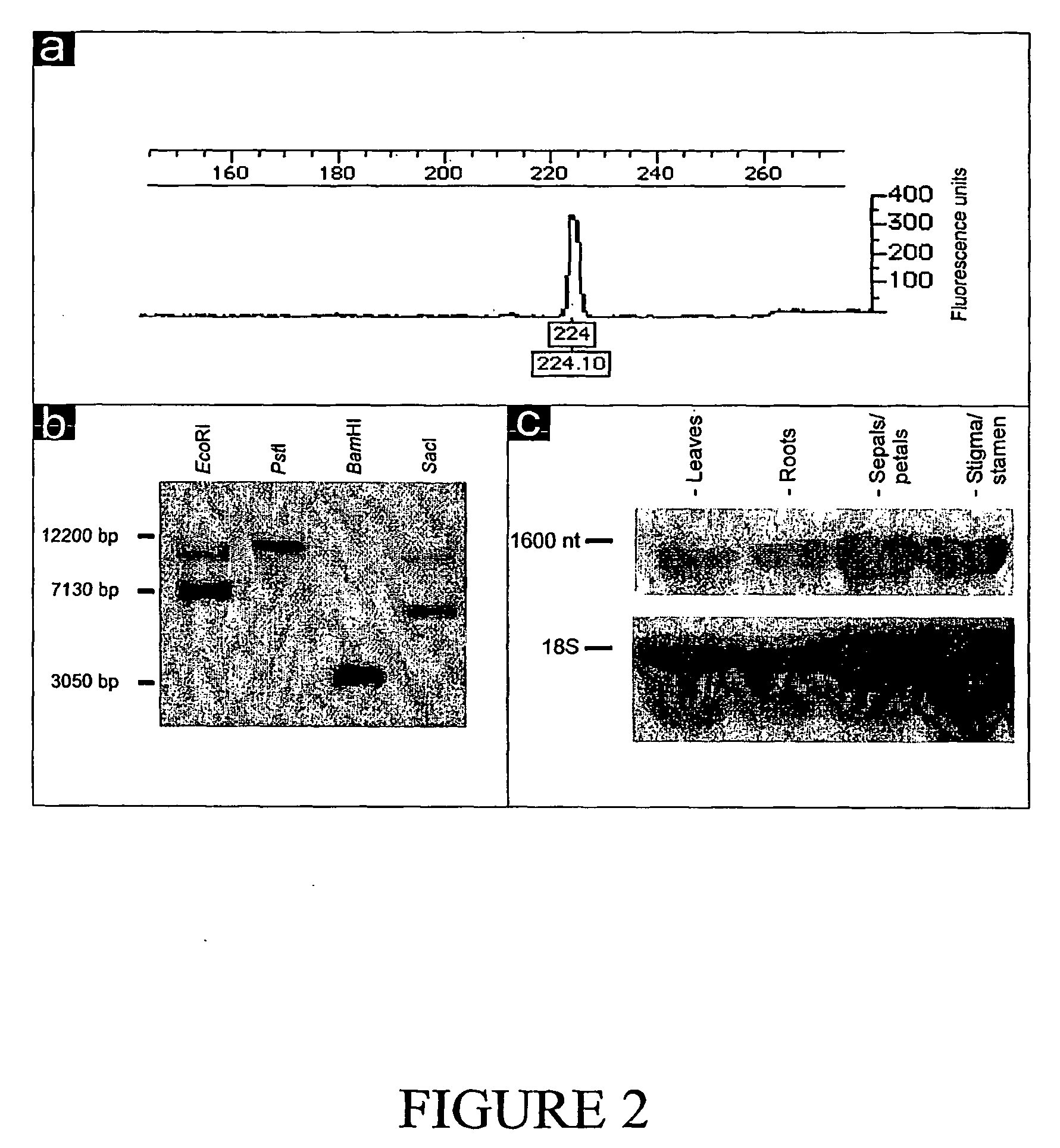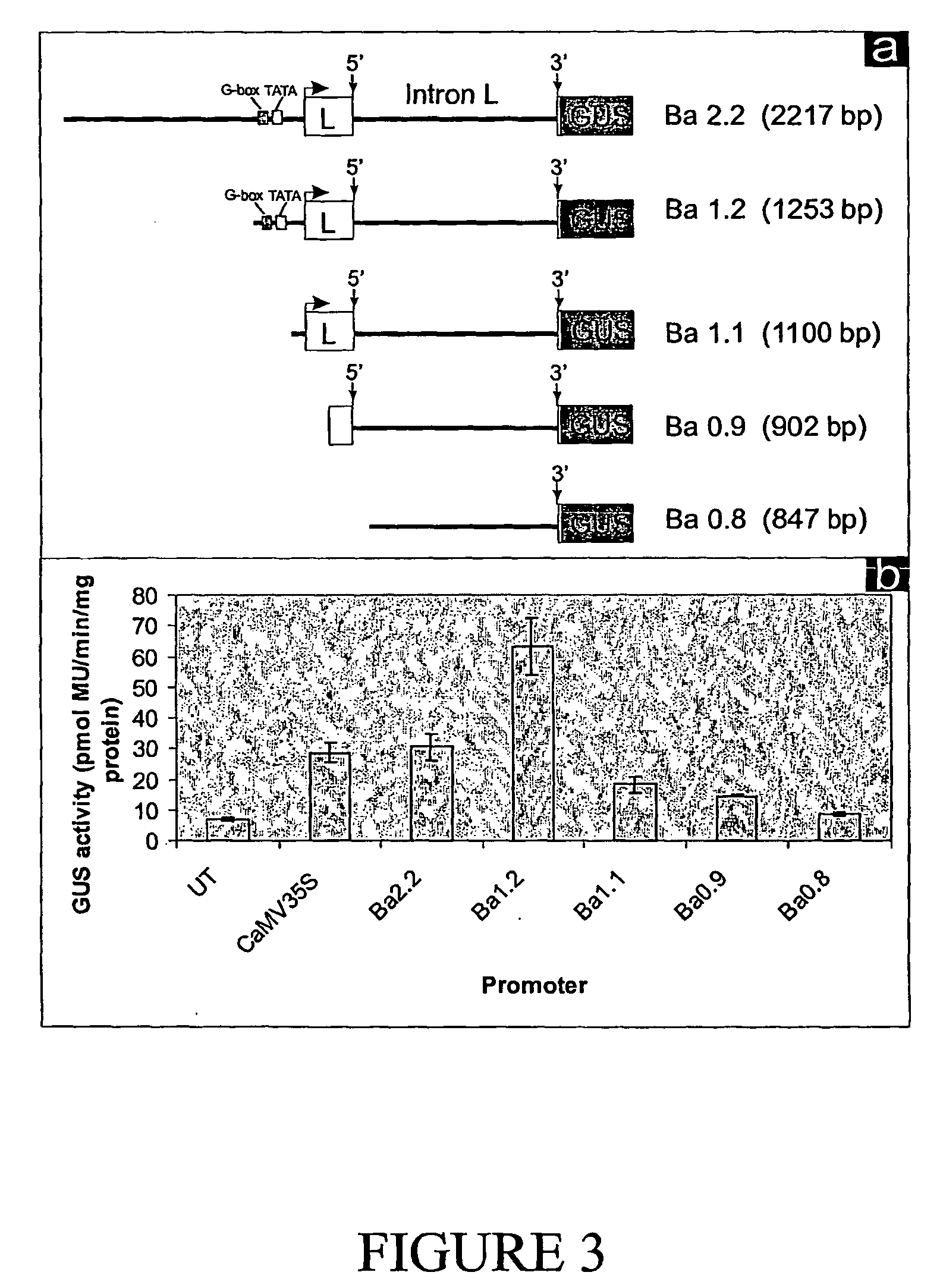Banana actin gene and its promoter
a technology of banana actin and promoter, which is applied in the field of plant genetic engineering promoters, can solve the problems of limited activity of actin promoters, dearth of promoters that can be used,
- Summary
- Abstract
- Description
- Claims
- Application Information
AI Technical Summary
Problems solved by technology
Method used
Image
Examples
example 1
Isolation and Cloning of the Act1 Promoter
[0166] The ACT1 promoter was isolated using a combination of ligation-mediated PCR (Mueller and Wold, 1989) and a method for amplifying flanking sequences as described below. Banana (Musa spp. cv. Bluggoe) genomic DNA was isolated from leaves of 2-3 month old in vitro plantlets essentially as described by Stewart and Via (1993). Genomic DNA (100 ng) was digested with SacI 37° C. for 12 h and the restriction enzyme inactivated by incubation at 68° C. / 10 min. A linker (50 pmol), created by annealing the LINKsac™ primer (5′-AGAATTCTGCAGGATCCCGGGGAGCT-3′ [SEQ ID NO: 8]) and KNIL™ primer (5′-CCCCGGGATCCTGCAGAATTCG-3′ [SEQ ID NO: 9]; 5′ phosphorylated and 3′ amino blocked), was ligated to the digested DNA at 14° C. / 12 h. The ligation product was used as template for a PCR with 200 μM of each dNTP, 5 μL Buffer 3 (Expand™ Long Template PCR System; Roche), 20 pmol of primers actin-N (5′-ACCTTGACCATTCCAGTGCC-3′ [SEQ ID NO: 10]) and LINKsac™, 0.5 U E...
example 2
Mapping of the Traniscriptional Start Site, Leader Intron, Polyadenylation Site and Actin Gene Isolation
[0168] The precise 5′ end of ACT1 mRNA was mapped using primer extension. Total RNA from banana embryogenic cells was isolated essentially as described by Chang et al., (1993). Total RNA (20 μg) was annealed to 10 pmol of 6-FAM end-labelled primer (synthesised by Genset, Lismore, Australia) 5′-GTCAGCCATGTTATGGATATCTT ACAC-3′ [SEQ ID NO: 16], for 10 min at 75° C. The reagents for cDNA synthesis were added on ice (10 mM DTT, 1 mM each dNTP, 20 U RNase inhibitor, 40 U Expand reverse transcriptase in buffer (Roche)) and the reaction incubated for 90 min at 42° C. Following removal of RNA by incubation with 25 ng DNase-free RNase (Roche) for 30 min at 37° C., cDNA was precipitated in 0.3 M sodium acetate with 2.5 volumes of ethanol. The primer extension products were resuspended in 8 μL 95% [v / v] formamide, 10 mM EDTA (pH9.0) and electrophoresed in a 6 M urea, 4.5% polyacrylamide TBE...
example 3
[0171] Using the strategy outlined in Example 1, a 1.2 kb fragment was amplified from banana genomic DNA. Sequence analysis of this product revealed strong homology to the rice actin exon 1 sequence (McElroy et al., 1990c). To obtain further upstream sequences primers were designed to the 5′ end of this fragment and the flanking sequences amplified. This resulted in a single 1 kb product and subsequent Southern hybridisation with an ACT1-specific oligonucleotide probe indicated the product was specific. Cloning and sequencing confirmed this and the ACT1 promoter sequence (2.2 kb) was assembled from these two fragments using overlapping PCR.
[0172] Alignment of the 3′ end of the ACT1 promoter with other actin promoters revealed the presence of a putative 3′ intron splice site (TTTTGCAG / AT [SEQ ID NO: 22]) which was almost identical to the monocot consensus (TTTTGCAG / GT [SEQ ID NO: 23]) (Simpson and Filipowicz, 1996). The precise location of the intron was mapped us...
PUM
| Property | Measurement | Unit |
|---|---|---|
| mRNA stability | aaaaa | aaaaa |
| resistance | aaaaa | aaaaa |
| stability | aaaaa | aaaaa |
Abstract
Description
Claims
Application Information
 Login to View More
Login to View More - R&D
- Intellectual Property
- Life Sciences
- Materials
- Tech Scout
- Unparalleled Data Quality
- Higher Quality Content
- 60% Fewer Hallucinations
Browse by: Latest US Patents, China's latest patents, Technical Efficacy Thesaurus, Application Domain, Technology Topic, Popular Technical Reports.
© 2025 PatSnap. All rights reserved.Legal|Privacy policy|Modern Slavery Act Transparency Statement|Sitemap|About US| Contact US: help@patsnap.com



